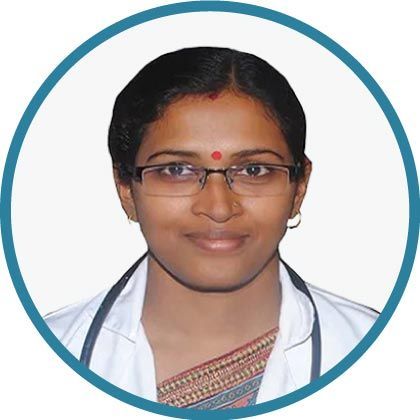What Leads to Headaches and Preventions That Work
Discover the common causes of headaches, from tension and migraine to sinus and cluster types. Learn practical, evidence-based prevention strategies, red flags, and lifestyle tips for lasting relief.

.webp?tr=q-80,f-webp,w-350,dpr-2,c-at_max 700w)
Introduction
Headaches are among the most common health complaints worldwide—and one of the most disruptive. Whether it’s a tight band of tension after a long day, a throbbing migraine that knocks you out, or a sinus flare with pressure behind the eyes, headaches can drain energy, derail plans, and reduce your quality of life. The good news: most headaches have identifiable triggers and proven preventions that can reduce how often they happen and how severe they feel.
In this guide, we unpack what leads to headaches and the preventions that work in everyday life. You’ll learn how to tell different headache types apart, which triggers to watch, and how to build a personalised prevention plan. We cover evidence-based lifestyle habits, practical workplace strategies, targeted options for migraines, cluster, and tension-type headaches, and when to seek medical care. You’ll also find quick red-flag checks, simple ergonomics tips, and science-backed ways to avoid rebound headaches from painkillers. If symptoms persist beyond two weeks or you notice red flags, consult a doctor online with Apollo 24|7 for further evaluation. Let’s get you back to clearer, calmer days—headache control is more achievable than you might think.
Headaches 101: What They Are and Why They Happen
Most headaches fall into two broad categories: primary and secondary. Primary headaches—tension-type, migraine, and cluster—aren’t caused by another illness; the headache itself is the condition. Secondary headaches result from another problem, such as sinusitis, a dental issue, high blood pressure spikes, infection, or rarely, serious conditions like bleeding in the brain or meningitis.
Pain comes from structures around the brain—blood vessels, nerves, muscles, meninges—not the brain tissue itself. In tension-type headaches, muscle tightness and stress-related changes sensitise pain pathways. In migraine, abnormal brain excitability, sensory sensitivity (light, sound, odours), neuropeptides (like CGRP), and nerve-vessel interactions create a cascade that produces throbbing pain, nausea, and sensitivity to stimuli. Cluster headaches involve the trigeminal-autonomic pathways, leading to severe one-sided pain around the eye with tearing or nasal symptoms in cyclical “clusters.”
A practical way to think about headaches is the “threshold model”: multiple small triggers—poor sleep, skipped meals, dehydration—add up until they push you over your personal threshold. Prevention focuses on lowering your overall trigger load so you stay below that threshold most days.
Consult Top Specialists Here
How Common Are Headaches? Why Prevention Matters
- Headache disorders are extremely common. The WHO estimates that more than half of the global population experiences a headache in a given year, and migraine is a leading cause of disability, especially among people under 50. Tension-type headache is the most prevalent, while migraine affects approximately 12–15% of adults. For many, headaches mean missed work or school, lower productivity, and poorer sleep. Even “mild” recurrent headaches can accumulate in cost and stress.
Prevention matters because it changes the trajectory. Reducing frequency by even one or two days a month adds up to extra weeks of clear-headed time each year. Preventive measures—sleep regularity, hydration, consistent meals, smart caffeine use, stress management—also improve overall health. For migraine, early acute treatment plus consistent preventions can significantly reduce disability, and for cluster headaches, access to oxygen therapy and appropriate medication can be life-changing.
A unique insight: think of your day in “trigger zones.” Mornings often carry dehydration and caffeine-withdrawal risk; afternoons concentrate screen strain and posture fatigue; evenings can bring bright light exposure or meal timing issues. Proactively adjusting habits in those zones—pre-hydrating in the morning, micro-breaks after lunch, dimming blue light after sunset—lowers your cumulative trigger load.
What Leads to Headaches: Triggers and Root Causes
Here’s a look at the main triggers and underlying causes of headaches:
Lifestyle triggers
- Stress and emotional load: acute stress and let-down after stress (“weekend migraine”) are classic migraine triggers.
- Sleep disruption: too little or too much sleep can trigger migraine and tension-type headaches.
- Hydration and meal timing: dehydration and skipping meals lower your threshold; keep a steady fluid and glucose supply.
- Caffeine: small, regular amounts may help; irregular use or abrupt withdrawal can trigger headaches.
Environmental triggers
- Light, noise, odours: bright or flickering light, loud sound, and strong smells can set off migraines.
- Weather changes: barometric shifts, heat, and humidity contribute for some people.
- Screen glare and posture: unchecked screen time and poor ergonomics amplify tension-type headaches.
Medical causes
- Sinusitis and allergies: facial pressure, congestion, and fever suggest a sinus cause, but many “sinus headaches” are actually migraines.
- Vision strain and TMJ: uncorrected vision problems or jaw clenching can drive recurring pain.
- Hypertension spikes, infections, medication side effects: these can cause secondary headaches; persistent or atypical patterns warrant medical review.
Hormonal influences
- Menstrual migraine: oestrogen fluctuations around menstruation commonly trigger migraine in women.
- Pregnancy/postpartum and perimenopause: hormone changes shift headache patterns; prevention strategies may need adjustment.
Unique perspective: Use a “trigger budget” for high-risk days (poor sleep + deadlines). On those mornings, schedule shorter meetings, pre-hydrate, wear blue-light–filter glasses, and plan a 10-minute walk at 3 pm.
Headache Red Flags: When to Seek Urgent Care
Some headaches need urgent care. Use the SNOOP10 red flags:
- Systemic symptoms: fever, weight loss, or known systemic disease.
- Neurologic symptoms: weakness, confusion, seizures, double vision, numbness.
- Onset: thunderclap (sudden, maximum pain within seconds to a minute).
- Older age at onset (>50) with new headache.
- Pattern change: progressively worsening or new type different from usual.
- Positional headache or triggered by exertion/sexual activity.
Papilledema, pregnancy/postpartum, immunosuppression, head injury, anticoagulant use.
If you experience a thunderclap headache, new neurological symptoms, or a “worst-ever” headache, seek emergency care.
Everyday Preventions That Work (Evidence-Based)
Here’s how you can prevent headaches in daily life:
Hydration and nutrition
- Maintain steady hydration; add electrolytes if needed.
- Balanced meals with protein and complex carbs; avoid long fasting windows.
- Caffeine strategy: keep intake moderate and consistent.
Sleep, stress, and movement
- Keep a consistent wake time; add a wind-down routine.
- Manage stress through breathing, walking, and mindfulness.
- Exercise regularly to lower frequency and muscle tension.
Screen-time ergonomics and the 20-20-20 rule
- Every 20 minutes, look 20 feet away for 20 seconds.
- Position screens correctly and use anti-glare filters.
- Keep shoulders relaxed and posture neutral.
Unique insight: “Pre-emptive micro-breaks” beat reactive ones.
Targeted Preventions by Headache Type
Here’s how prevention differs by headache type:
Tension-type headaches
Use posture checks, stretches, heat, and stress control.
Migraine
Maintain consistent sleep and meals, manage triggers, and consider magnesium, riboflavin, or CoQ10 after consulting a doctor.
Sinus headaches vs migraine
Many “sinus” headaches are actually migraine; check for infection signs if in doubt.
Cluster headaches
Severe one-sided pain requires medical treatment, often oxygen therapy or triptans.
Medicines: Acute Relief, Preventive Options, and Overuse Risks
Here’s what to know about medicines and medication-overuse headaches:
Acute treatments and timing
- OTC NSAIDs or acetaminophen can help if taken early.
- Triptans, gepants, or antiemetics may be prescribed.
Preventive medicines
- Needed for frequent or disabling attacks.
- Options include beta blockers, topiramate, amitriptyline, and CGRP blockers.
Medication-overuse
Overuse of painkillers can cause rebound headaches; limit acute use.
Build Your Personalised Headache-Prevention Plan
- Track headache timing, intensity, and triggers. Identify patterns—like skipped meals or late nights—and target one habit weekly.
- Use wearables, reminders, and lighting tools to reduce strain. Evaluate monthly for fewer severe days rather than perfection.
Special Considerations: Kids, Pregnancy, and Older Adults
Here’s how prevention differs across life stages:
Children: Maintain meals, hydration, and sleep routines.
Pregnancy and postpartum: Use non-drug strategies and consult for any new severe headache.
Older adults: Any new headache over 50 warrants evaluation.
Tests That May Help and When to Use Them
Imaging isn’t usually needed without red flags. Vision, dental, or sleep evaluations may help. Blood tests (thyroid, iron, vitamin D, HbA1c) can uncover contributing factors.
Work and Digital Life: Preventing Screen-Related Headaches
Ensure ergonomic setup, proper lighting, and hourly screen breaks. Pair breaks with hydration for maximum benefit.
Conclusion
Headaches are common, but they’re not inevitable. Understanding what leads to headaches—your personal mix of lifestyle, environmental, and biological triggers—allows you to design preventions that actually work. Start with steady hydration, regular meals, consistent sleep, and movement breaks. Layer in targeted strategies for your headache type. Watch for red flags and get help when needed—especially for sudden, severe, or unusual headaches.
Progress is rarely all-or-nothing. With tracking and small adjustments, you’ll likely see fewer severe days, faster recovery, and better control. If improvement stalls, book a physical visit to a doctor with Apollo 24|7 or consult online for next steps.
Consult Top Specialists Here
Consult Top Specialists Here

Dr. Rajib Ghose
General Physician/ Internal Medicine Specialist
25 Years • MBBS
East Midnapore
VIVEKANANDA SEBA SADAN, East Midnapore

Dr. D Bhanu Prakash
General Practitioner
10 Years • MBBS, AFIH, Advanced certificate in critical care medicine, Fellowship in critical care medicine
Hyderabad
Apollo 24|7 Clinic, Hyderabad

Dr. Shesham Srinidhi
General Practitioner
5 Years • MD(physician)
Hyderabad
Apollo 24|7 Clinic, Hyderabad
(150+ Patients)

Dr Vinay Kumar A V
Nephrologist
8 Years • MBBS, MD - General Medicine, DM - Nephrology
Bilaspur
Apollo Hospitals Seepat Road, Bilaspur

Dr. Sandhya Chandel
General Physician/ Internal Medicine Specialist
16 Years • MBBS, MD (Int. Med.), IDCCM
Bilaspur
Apollo Hospitals Seepat Road, Bilaspur
(125+ Patients)
Consult Top Specialists Here

Dr. Rajib Ghose
General Physician/ Internal Medicine Specialist
25 Years • MBBS
East Midnapore
VIVEKANANDA SEBA SADAN, East Midnapore

Dr. D Bhanu Prakash
General Practitioner
10 Years • MBBS, AFIH, Advanced certificate in critical care medicine, Fellowship in critical care medicine
Hyderabad
Apollo 24|7 Clinic, Hyderabad

Dr. Shesham Srinidhi
General Practitioner
5 Years • MD(physician)
Hyderabad
Apollo 24|7 Clinic, Hyderabad
(150+ Patients)

Dr Vinay Kumar A V
Nephrologist
8 Years • MBBS, MD - General Medicine, DM - Nephrology
Bilaspur
Apollo Hospitals Seepat Road, Bilaspur

Dr. Sandhya Chandel
General Physician/ Internal Medicine Specialist
16 Years • MBBS, MD (Int. Med.), IDCCM
Bilaspur
Apollo Hospitals Seepat Road, Bilaspur
(125+ Patients)
More articles from Headache
Frequently Asked Questions
What is the difference between a sinus headache and a migraine?
True sinus headaches come with nasal discharge, fever, and infection signs. Many “sinus headaches” are actually migraines.
How can I prevent tension headaches without medication?
Focus on posture, hydration, regular meals, micro-breaks, and stress reduction.
How do I avoid rebound headaches from painkillers?
Limit use of pain medications and discuss preventive options with your doctor.
Which supplements help prevent migraine?
Magnesium, riboflavin (B2), and CoQ10 can help; consult your clinician before use.
When should I see a doctor for headaches?
Seek care for sudden, severe, or changing headaches, or if symptoms persist beyond two weeks.


